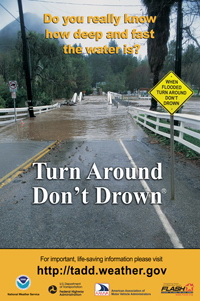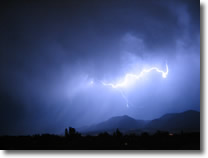![]() Friday marked the one year anniversary of the tornado that struck Holly, Colorado in Prowers County. At 8:11pm on March 28, 2007, with no real warning, an EF-3 tornado with winds of 165mph touched down and quickly tore a path more than two miles long and four blocks wide. 162 of the 369 homes in Holly were either damaged or destroyed but most notably, Rosemary Puga died during the storm and Delores Burns died a month later due to the injuries she suffered.
Friday marked the one year anniversary of the tornado that struck Holly, Colorado in Prowers County. At 8:11pm on March 28, 2007, with no real warning, an EF-3 tornado with winds of 165mph touched down and quickly tore a path more than two miles long and four blocks wide. 162 of the 369 homes in Holly were either damaged or destroyed but most notably, Rosemary Puga died during the storm and Delores Burns died a month later due to the injuries she suffered.
Today Holly is rebuilding and showing the American spirit of survival that has been demonstrated so many times in our country’s history. From the ashes of pain, suffering and destruction a new Holly is rising today but it serves as a reminder of the destructive power of Mother Nature. Here in Colorado we can see the entire gamut of severe weather and while we talk about the weather every day, we should always remember that it is not us who is in control and lives can be lost.
Please take a moment to say a prayer for Rosemary, Delores and all of the residents of Holly.

 First, the good news. With the extraordinary amount of snow the mountains have experienced this winter, the chances of drought are negligible for most of the state. The southeastern corner of Colorado however could see some risk.
First, the good news. With the extraordinary amount of snow the mountains have experienced this winter, the chances of drought are negligible for most of the state. The southeastern corner of Colorado however could see some risk.


 We are pleased to announce that
We are pleased to announce that  Colorado is ranked # 2 in lightning related deaths (1997 – 2006) so the danger this presents to life and property is very significant for us. It is interesting to note though that Colorado ranks only 31st in the number of cloud to ground strikes over that same period. This highlights the fact that, quite frankly, folks here in Colorado are ignorant about the dangers lightning presents and they simply do not take proper steps to protect themselves. For this reason, we have created a
Colorado is ranked # 2 in lightning related deaths (1997 – 2006) so the danger this presents to life and property is very significant for us. It is interesting to note though that Colorado ranks only 31st in the number of cloud to ground strikes over that same period. This highlights the fact that, quite frankly, folks here in Colorado are ignorant about the dangers lightning presents and they simply do not take proper steps to protect themselves. For this reason, we have created a